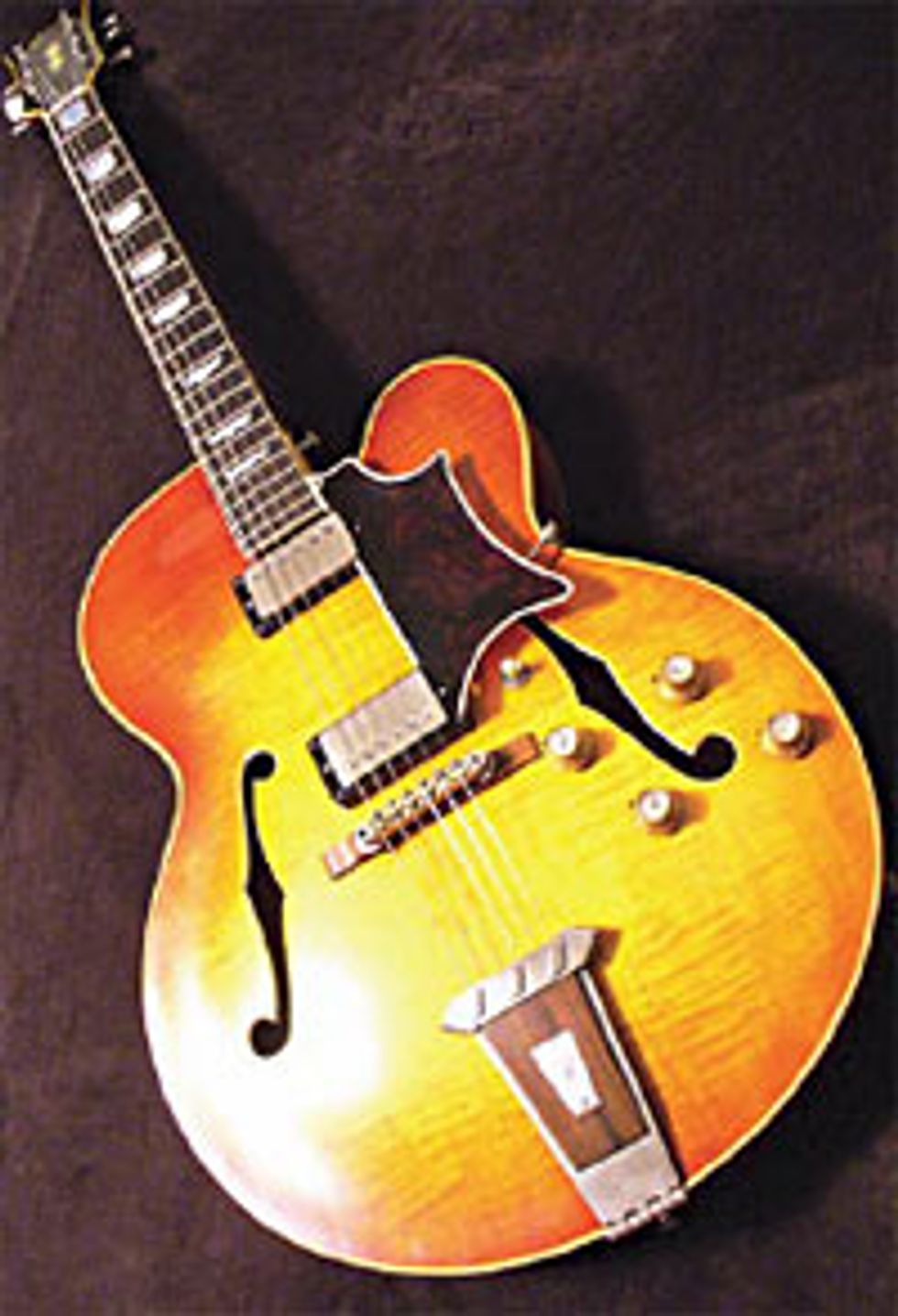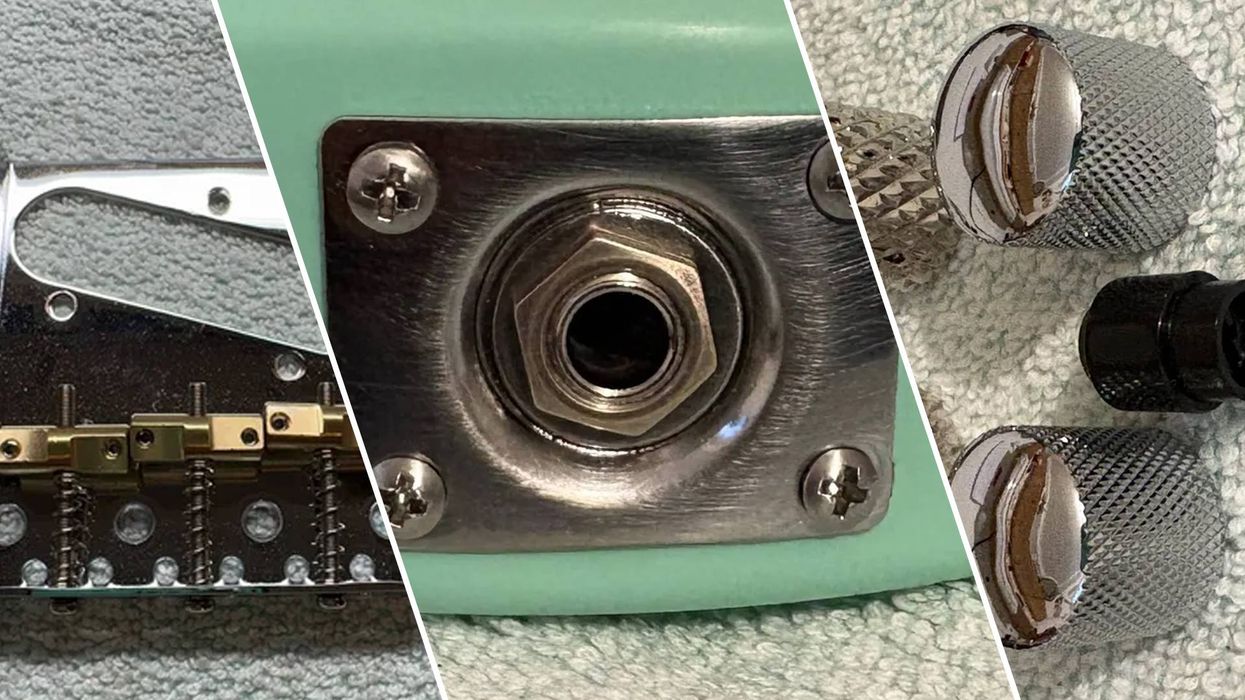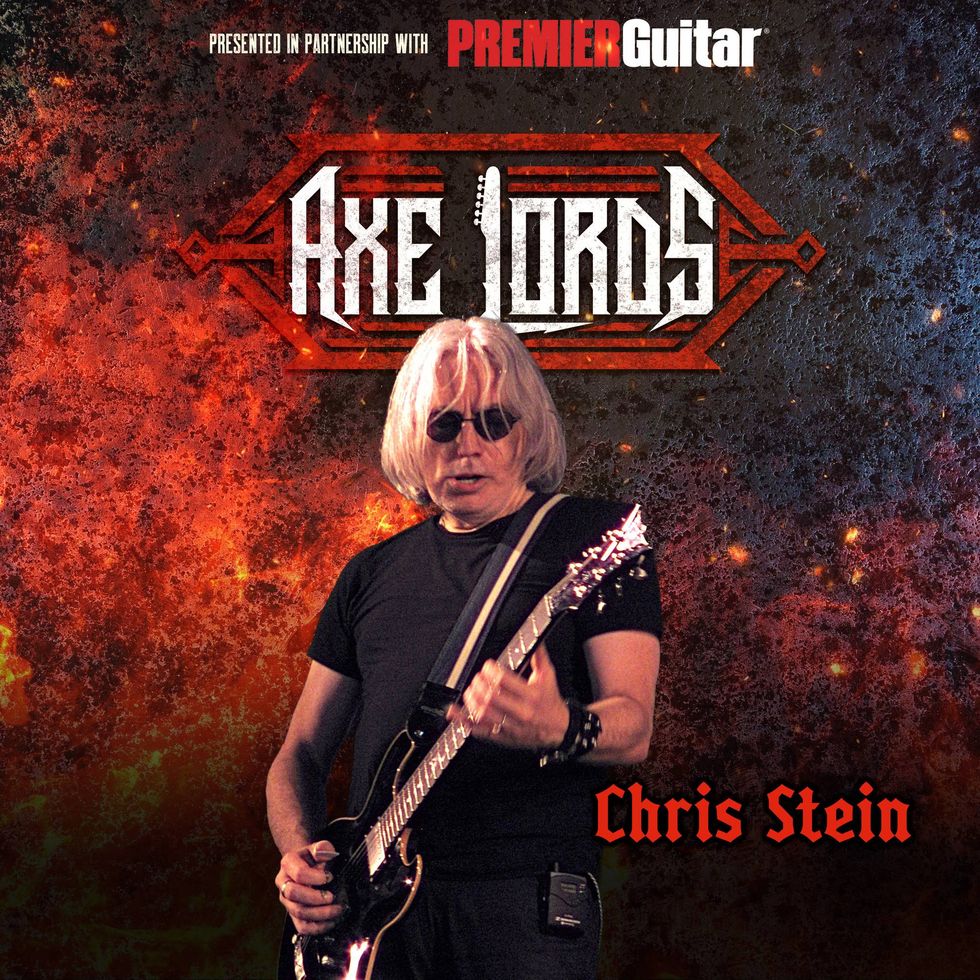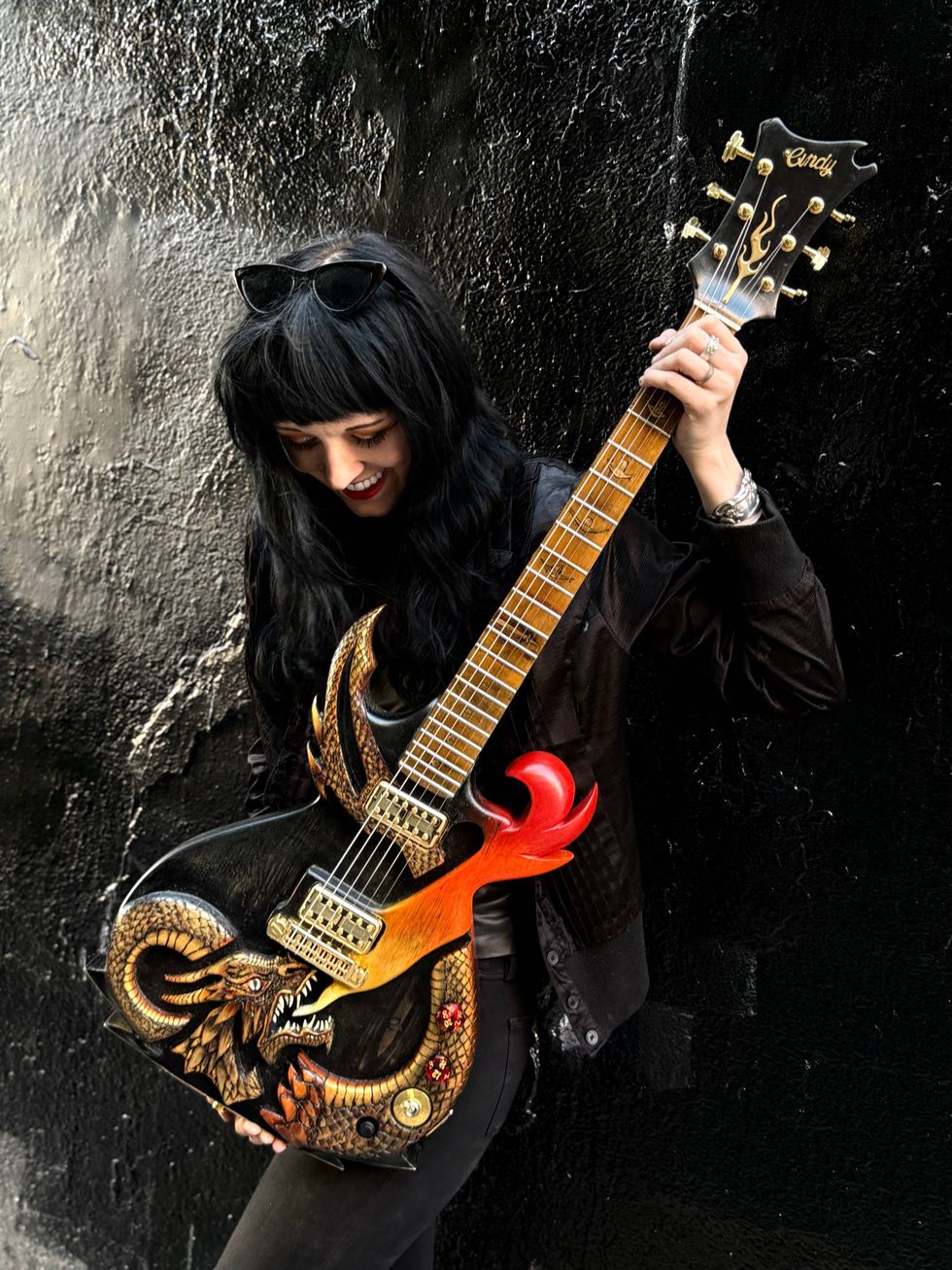 | |
|
In 1958, Tal moved to the coastal town of Seabright, New Jersey, and lived a placid life of boating, teaching and sign painting, mixed with local performances and the occasional reemergence from “retirement.” In the following decades, he was occasionally deputized to fill in at the Great Guitars’ (a trio consisting of Herb Ellis, Barney Kessel and Charlie Byrd) performances. Although he seemed to vanish from the scene for years at a time, he would reemerge occasionally to produce fine jazz recordings, as he did during his “return” in 1969 and again in the eighties. In one such resurfacing, the Concord label produced three Farlow records, including the relentlessly swinging Cookin’ on All Burners. These recordings from the 1980s spotlight Tal as a veteran founder of bebop jazz guitar and prove his enduring viability as an exciting performer with a unique voice. He was equally at home playing chord melodies as working in a combo setting, as evidenced in the excellent solo chord melody of “Misty” (there’s a great video of this on YouTube).
Tal Farlow was a Gibson ES-350 player during the fifties, and was referred to as “The Gibson Boy” as he became better known on the music scene. He had gained enough acclaim that in 1960 he was approached by Gibson to be one of the three important jazz performers for whom signature artist models would be designed. This exclusive triumvirate was made up of Johnny Smith, Barney Kessel and Tal.
He had a significant hand in the design of the Tal Farlow model. Thankfully, one of his early designs was rejected: a pickup that could slide along the pickguard on a track rail to achieve the tonal variances otherwise made possible by two pickups*. On the first Tal model, Gibson opted instead for a standard routed, two pickup design with nickel hardware. Early models can be found with PAF pickups. The Tal model came with two full-size humbuckers, unlike many of the other high-end Gibson archtops (such as the L-5CES, Byrdland, Super 400CES and Barney Kessel models) that all came from the factory in the early sixties with the narrower spaced neck pickup.
The TF model in some ways resembles Tal’s earlier ES-350 with its Venetian cutaway, 17” lower bout and maple top. The TF model adds a 25.5” scale length (same as the L-5 and Super 400), a unique pickguard shape, reversed J-200 inlays on the rosewood fretboard, double crown inlay on the headstock, L-7 style tailpiece with signature inlay, and Kluson Super (waffle-back) tuners. Many of the models have a Tal-designed scroll in the horn of the upper bout (some, like our example, do not). A sunburst finish, “Viceroy Brown,” was standard. Unlike Barney Kessel, who seemed disinterested in actually using the BK models, Tal played his TF signature model the rest of his life.
Due to poor sales and a lack of popular interest, the TF model lasted only five years (1962-1967), which pales in comparison to the 14-year longevity of the BK models (1961-1974). The TF model was reissued by Gibson in the nineties, and players today seem to have a kinder eye for the TF model’s more traditional geometry and style than they do the BK model, with its roguish, double sharp cutaway.
As we look at Tal’s career, we can imagine that there must have been some inner struggle with the question of how to best make a living – a question most artists are familiar with. As early as 1962, Tal seemed to begin drifting in and out of retirement and this continued through his later years. For many years he worked locally in New Jersey, doubling as a sign painter. Tal gave guitar lessons at his home until his death in 1998 at age 77. He left behind a fine legacy of recordings – and an excellent Gibson artist model.
*Never a company to completely abandon a bad idea, Gibson introduced the sliding pickup concept in 1973 on the Grabber bass, with deservedly poor results. (Gibson Electrics – The Classic Years, Hal Leonard Corp., 1994; page 99)
Jim Bastian
A clinician and jazz educator, Jim Bastian is a 10 year veteran of teaching guitar in higher education. Jim holds two masters degrees and has published 6 jazz studies texts, including the best-selling How to Play Chordal Bebop Lines, for Guitar (available from Jamey Aebersold). He actively performs on both guitar and bass on the East Coast.
An avid collector and trader in the vintage market, you can visit Jim’s store at premierguitar.com (dealer: IslandFunhouse).











![Rig Rundown: Russian Circles’ Mike Sullivan [2025]](https://www.premierguitar.com/media-library/youtube.jpg?id=62303631&width=1245&height=700&quality=70&coordinates=0%2C0%2C0%2C0)







